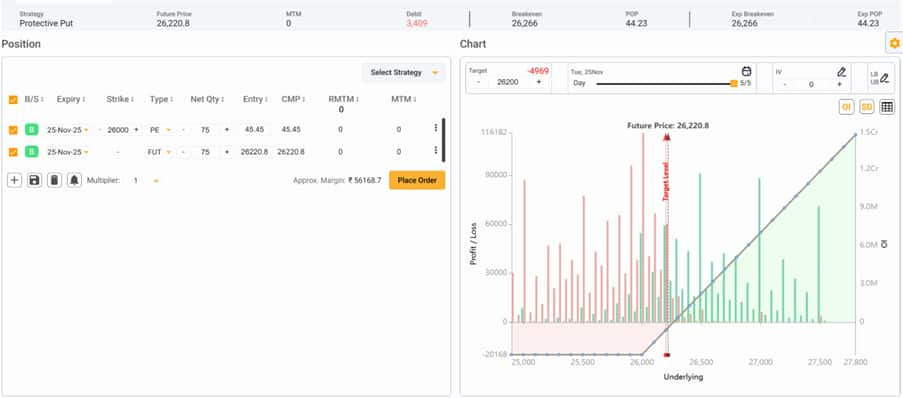What are dividend discounts in futures and options and how to deal with them?
Fine tuning trades and making them dividend discount - ready is essential in the result season.
SHUBHAM AGARWAL | 31-May-20
Reading Time: 3 minutes

The results season is in full swing. With it follows a lot of expectations on dividends especially from those dear companies known for declaring dividends along with their annual results.
While the actuals are always declared, the expectation is always built even before even the date of the result is announced.
First, let us examine the expected impact as well as accrued dividend yields on the F&O instruments. Then we will look at the challenge and modification associated with it.
We will look at the impact of this on futures, which will help us understand impact on options also easily, as pricing mechanism is simple as in futures there is no conditional obligation like Options. By levying the interest cost, we assume the seller is buying the underlying on the day of futures contract and carries it through the expiry. In return, is rewarded with the carrying cost (risk-free interest). Thus, price of a futures contract would generally be higher than spot price (cash market price).
However, now that we are assuming that the seller of the futures contract is buying the asset at the time of entering the contract to safeguard from any price volatility in the underlying, the seller is also expected to be rewarded with any income that the underlying stock (asset) generates during the period the seller is carrying it.
Hence, while the interest cost is added to the spot price, in calculation of futures we also reduce any income yield that the underlying could deliver during the expiry. For example, for a Rs 100 stock in an interest rate regime of 12 percent (0.12) p.a. risk-free rate and 0.5 percent (0.005) dividend yield.
1 month future price = 100 (1 + (0.12/12) - 0.005) = 100.5If this dividend yield was 15 percent
1 month future price = 100 (1 + (0.12/12) - 0.015) = 99.5
These are the cases when we see discounts in futures. Similar to this even option have an impact. Expectation of declared or yet to be declared (we will understand in a bit) dividend yield would push the call premiums down and put premiums up.
The time span of discount is the duration since the company announces the dividend, till the date of declaration. This is called discount-based declared dividend. But in reality, the futures start trading dividend discounts way before that as the expectations from market consensus starts getting built in to the prices. These expectations led dividend discount is most of us get surprised with.
Knowing the impact does half the job. This helps in the first step towards dealing with the dividend discounts. The readiness must always be there in more or less three expiries mid-year when most of the stocks go through annual dividends.
This is more important as these dividend discounts individually also impact the index futures and options as well. This is visible in discounts in Nifty futures during the same period.
The impact would be that your underlying forecast would get impacted unduly, hence while trading Nifty during this period and stocks declaring regular dividends at least should have stop loss and targets accommodated for a margin of safety for the same.
This becomes a bigger challenge when some of the stocks while going into results are being traded and suddenly, they surprise the market with excessive dividends, which is many times associated with a good set of result.
So, on one hand, the underlying stock is going up but on the other hand due to dividend discount of declared dividend the Long Calls and Long Futures are suffering.
These impacts may not be regular but sudden negative surprises can definitely ruin the pay-off. Hence, fine tuning the trades and making them dividend discount ready is essential in result season.
(The author is CEO & Head of Research at Quantsapp Private Limited.)
Disclaimer: The views and investment tips expressed by investment experts on Moneycontrol.com are their own and not that of the website or its management. Moneycontrol.com advises users to check with certified experts before taking any investment decisions.
Learn and read more about short starngle from Quantsapp classroom which has been curated for understanding of Long Straddle from scratch, to enable option traders grasp the concepts practically and apply them in a data-driven trading approach.
Recent Articles

Evolve Your Trade: The missing step in most trading systems: Shubham Agarwal
06-Dec-25

Best trending option trading strategies: Shubham Agarwal
29-Nov-25

3 best ways to hedge using Options: Shubham Agarwal!
22-Nov-25

When in doubt to write, do Iron Fly: Shubham Agarwal!
15-Nov-25

Identify potential turning points with advance-decline: Shubham Agarwal
08-Nov-25

Slow and spreads more efficient: Shubham Agarwal
01-Nov-25

Use implied volatility as probable top finder: Shubham Agarwal
25-Oct-25

How to trade potential breakout post consolidation: Shubham Agarwal!
18-Oct-25

SHUBHAM AGARWAL is a CEO & Head of Research at Quantsapp Pvt. Ltd. He has been into many major kinds of market research and has been a programmer himself in Tens of programming languages. Earlier to the current position, Shubham has served for Motilal Oswal as Head of Quantitative, Technical & Derivatives Research and as a Technical Analyst at JM Financial.
Recent Articles

Evolve Your Trade: The missing step in most trading systems: Shubham Agarwal
06-Dec-25 20:43:00

Best trending option trading strategies: Shubham Agarwal
29-Nov-25 09:32:00

3 best ways to hedge using Options: Shubham Agarwal!
22-Nov-25 09:11:00

When in doubt to write, do Iron Fly: Shubham Agarwal!
15-Nov-25 10:48:00

Identify potential turning points with advance-decline: Shubham Agarwal
08-Nov-25 10:35:00

Slow and spreads more efficient: Shubham Agarwal
01-Nov-25 10:35:00

Use implied volatility as probable top finder: Shubham Agarwal
25-Oct-25 09:56:00











